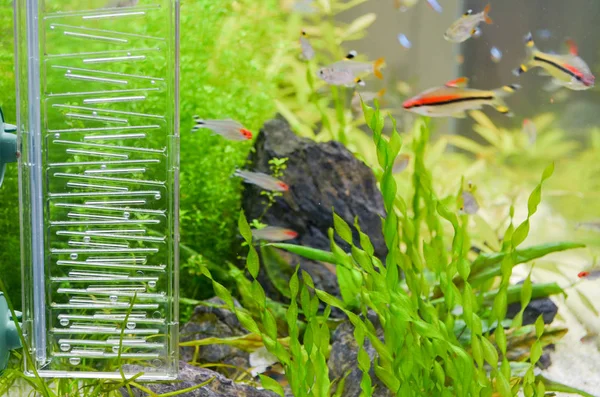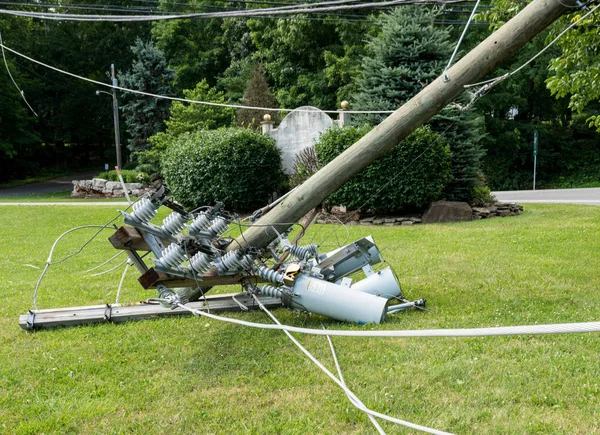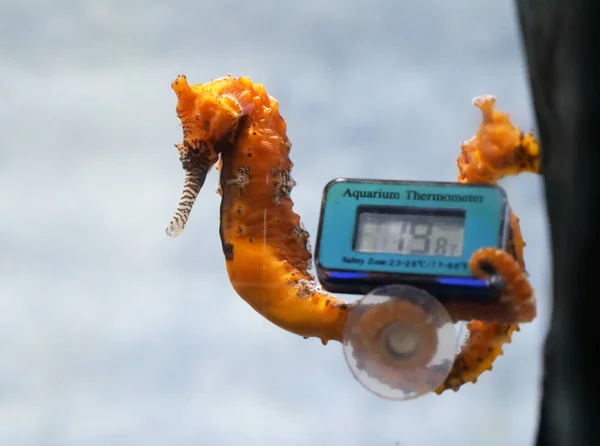Storms are not too big of a deal in our modern era. But sometimes, the loss of power is more than just a nuisance.
I’ve personally had to deal with this experience. As a keeper of several fish tanks, the last thing I want is for all of my expensive and efficient aquarium equipment to suddenly no longer be keeping my wet pets happy. In the midst of a storm and power outage, I had to learn a lot about how I could keep my wet pets alive and healthy for a few hours without electricity.
And in the aftermath, I learned several more tricks, so I’d never be caught unprepared again. So how can you do what I did and help your fish survive during a sudden power outage? And how long can a fish tank go without power?
How Long Can Fish Survive Without Power?
Assuming you do everything that is needed, so no fish die, a fish tank can go several days without power. The aquarium won’t be just sitting around, of course. You need to take an active hand in doing what your filter, heater, and other life support technology once did for your aquarium fish!
What to Consider During a Power Outage
How you respond to a power outage is going to depend on a number of things.
- Whether you know if the outage is brief or more long-term
- How many fish you have inside the tank
- The ambient room temperature
- The health of your fish
- How large your aquarium is
- Any backup options you have for power outages
If you are already receiving updates from the power company saying that they are aware of downed limbs that took out a power line, then it is likely that electricity will be restored within hours. Most power outages are in this category; inconvenient but brief affairs.
For example, if you already have a battery-powered air pump, then you are very well set to get through short to medium-term power outages. These units have up to 16 hours of run-time before they need to be recharged.
In this case, you don’t really need to panic too much! Just keep your aquarium water aerated and prevent it from growing too cold in the meantime using the techniques we’ve outlined below.

How Many Fish Do I Have?
The population and size of your fish tank matter a lot when you are dealing with a power outage. Without surface agitation, a filtration system, heater, and other life support tools operating, losing power becomes a major threat to aquatic life.
The more fish you have inside the tank, the faster they will consume available oxygen. Oxygen levels and water quality will steadily plummet since there is no air stone or aquarium filter running to help replenish it.
The filtration system not running also means that fish waste is no longer being processed. Your filter media is where your beneficial bacteria live, which consume the ammonia that fish produce, converting it into less toxic forms.
Ammonia toxicity becomes a problem in heavily populated aquariums where the filter has stopped running. Possibly within a day of having no power, but it depends on the size of your fish tank and the fish bioload.
Power Outages and Your Beneficial Bacteria
But something that is not nearly as obvious is that your beneficial bacteria also need the filter to be running. Nitrifying bacteria are aerobic organisms, meaning that they need oxygen levels to be high. They breathe oxygen, just like fish and humans. If the filter is no longer running for several hours, they slowly begin to die.
If a power outage lasts longer than a couple of days, you run the risk of partially resetting your biological cycling process. This can result in a crash once you get the tank back up and running again: fish start producing ammonia, and you start feeding again.
But there are no longer enough bacteria to keep up with the waste, causing pollution levels to suddenly skyrocket, killing fish. This is basically new tank syndrome, except in a formerly well-established, fully cycled aquarium.
If you have a filtration bio-wheel or other systems, it is especially vulnerable to drying out once the power stops running. We always recommend taking the bio wheel and soaking it in a small container of aquarium water to keep it hydrated during the outage.
Surviving Longer Power Outages
Sometimes a power outage can last for a few to several days at a time. Perhaps a disaster-level storm has leveled infrastructure across a large area. Or maybe you live in a rural area, and the power company seems to be dragging its feet. What can you do to get through a longer power outage?

Perform Water Changes As Needed
If you know the fish tank will be without power for longer than a few hours, then you should be prepared to perform water changes as needed. Water changes remove any ammonia that builds up in the system from fish waste and the decay of leftover food, dead plant leaves, and any other organic matter.
All you need to do is siphon off a few inches from the total volume of the tank water at a time. I’d go for no more than a 20-40% water change if my liquid test kits show that the levels of ammonia and other toxic compounds seem to be rising.
Water changes not only help keep fish alive. But they also help aerate the water when adding it to the tank. Adding freshwater that is a few degrees warmer can also help raise the water temperature if your aquarium is starting to cool off.
How Long Can Aquarium Fish Go Without Light?
Fish live without power fine so long as the oxygen content remains high and a hot water temperature is maintained (for tropical fish). In fact, I recommend leaving the light off during a power outage, even if you have a battery backup and power strip that could keep them running.
Lights aren’t needed for fish to live. And corals, plants, and other photosynthetic animals will survive for a few days with no lights running. They may show some stress once you restore power. But any power that you do have access to should be channeled into major life support systems, not lighting.
Keeping the lights out will also reduce activity. The less your fish do, the less waste they create and the less oxygen they will consume. This buys you more time in the long term.
How Can I Oxygenate My Fish Tank Without Electricity?
The best way by far to oxygenate a fish tank when you no longer have power is by using battery-powered air pumps. An air pump running on batteries will usually have up to 16 hours of run time, depending on the power and size of the unit.
Many of the models you find online are rechargeable, which is normally a good thing, except during a power outage, you won’t have any way of recharging it without battery backups.
Instead, you should look for models that use AA, AAA, or D batteries, which can be bought at any convenience or grocery store. This way, your fish will have more oxygen for as long as you need to during an outage.
Oxygenating With Hydrogen Peroxide
Some sources also recommend using hydrogen peroxide as a sort of chemical oxygen booster. A teaspoon of 3% concentration per 10 gallons of water volume can significantly boost oxygen concentrations in a fish tank (hydrogen peroxide is unstable and breaks down into oxygen and water over time).
While this method does work, I recommend only using this as a method of last resort. Hydrogen peroxide is a very unstable, reactive molecule. It can cause harm to sensitive tissues like gills, coral flesh, and softer, sensitive plants. If you have no other option, then you might want to use hydrogen peroxide, but it’s an emergency tool and nothing more.
How Can I Keep My Aquarium Warm?
Unfortunately, cold weather and power outages often go hand in hand. Winter storms can cause ice to form, dropping tree limbs, trees, and power lines. So when you lose power, you may find yourself dealing with cold at the same time.
Since they just can’t put on a sweater and conserve body heat, tropical fish absolutely need a strict temperature range that is significantly higher than winter temperatures to survive. So how can we help the water temperature stay where it needs to be without a heater?

Heat Loss Versus Aeration
Unfortunately, there is a bit of a problem involved when it comes to managing both dissolved oxygen and heat. In order to help an aquarium retain as much heat as possible, you want to prevent surface agitation.
Leaving the lid on, only opening it to check water conditions or other essential tasks. And otherwise not disturbing the tank.
But if you don’t agitate the surface, which keeps the tank warm, dissolved oxygen levels will steadily drop as fish consume it. And carbon dioxide levels will steadily rise.
The answer is that you need to do enough of both to ensure that your fish tank gets enough oxygen but also does not grow too cold from opening the tank and aerating it.
Insulating Your Fish Tank
Instead of a sweater for your fish, try wrapping up the fish tank with insulating material! Towels, clothes, newspapers, or anything else you have on hand will help slow down heat loss over time. Use tape to secure these materials in place.
Heat is lost in smaller tanks much faster than in larger tanks, by the way, because of the difference in water volume. A large tank has more heat to hold onto, so the water temperature will remain warmer longer. If you have a larger fish tank (55+ gallons) and you know a power outage is only going to be for a few hours, you don’t have much to worry about. The tank will stay in the safe zone (at or above 70°F) for most fish.
If you have any thermal bottles or plastic jugs, you can try filling them with any hot water that is still within the system and hasn’t cooled off. Just be careful not to overheat your fish tank in doing so! To keep them warm until you need them, you can place the bottles of hot water in a standard picnic cooler (which will keep things hot as well as cold).
And as I mentioned before, it is best to leave the lid undisturbed. The air between the lid and the water’s surface will also act as an insulator. But every time you open the lid, some precious heat will be lost to the room.
What If I Need to Cool My Fish Tank?
Sometimes the opposite problem needs to be addressed! How can I cool off my fish tank if the climate is hot and the water temperature is rising?
Ice cubes that you’d normally use for drinks can be added to your fish tank instead. Again, don’t add too many at once since we don’t want the temperature to crash. Add a few at a time and monitor the temperature before adding more.
Since we want to cool the aquarium, we can open the lid to help heat escape. Aerating the water also helps a lot since it increases agitation at the surface and the overall surface area through bubble creation. This speeds up heat loss!
What Should I Check Once the Power Returns?
Once the worst has ended, and power is restored to your fish tank, the first thing I would do is check the water parameters. If ammonia and other compounds are looking a little too high, it might be time for a water change.

If the parameters look good, then it is probably time to feed your fish! They have been through an event that was a little stressful and have had no food. So turn the lights back on, give them time to adjust, and then feed lightly the first time.
Also, check their responses and numbers. Are there any fish missing that have died? Are they eating properly? How are the colors of your corals or plants? Do a general check-in and see if there are any signs of stress that need to be addressed!
Wrapping Up

Keeping fish alive without power can be a real challenge. Maintaining water quality, temperature, and oxygen levels take skill when you lose the tools you are used to.
Fortunately, it is not impossible to keep fish safe, even for a few days if need be, until power is restored! Just follow the instructions outlined in this guide, and your fish tanks should be no worse off.
And maybe consider buying a battery-powered air pump and other backup equipment if you live in an area prone to outages!
Related:

